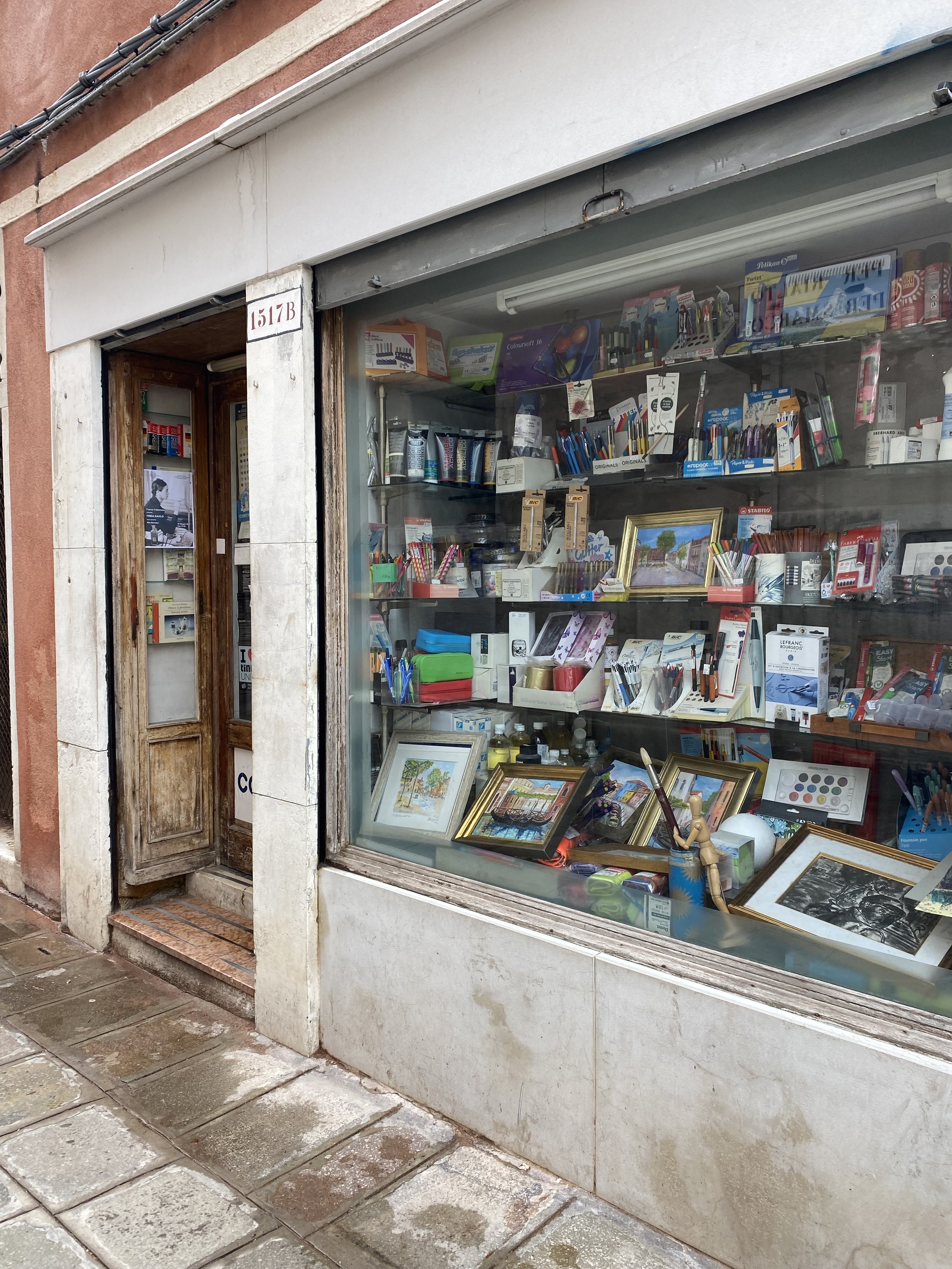THE STORY BEHIND THE MAP
On the morning of a rainy Mother’s Day, we were standing on the edge of canals, raincoats zipped and umbrellas out, (un)enthusiastically participating in a walking tour of Venice. Nevertheless, we learned lots of interesting facts about Venice, which gave us the fun idea of making a map (not to scale) for the rest of the rainy afternoon!
We went on an excursion to find a large poster board and found the tiniest little stationary store, tucked in the alleyways. It was the perfect find! The kindest (and oldest) man ever eventually sold us a meter long paper for only €0.80 after we fumbled our way through a terrible excuse for Italian with the help of Google Translate.
We all trotted back home soaking wet, and laid the paper on the table. We poured out all of our pens and pencils on the table, sat down, and started jotting down some of the facts we learned on our tour.
There are ten pinpoints, each explaining the facts about Venice that we learned on our walking tour.
Islands. Venice is not one island, but actually over 120 islands.
Canals. The canals separate all the islands and are also how people get around Venice. There are many fish and squid and mussels in the canals, but they also dump all the sewage in there, so I wouldn’t advise swimming in the canals.
Bridges. There are over two thousand bridges connecting the islands over the canals that have been there for centuries. Rialto Bridge is the most famous!
Commerce. Because it is an island, Venetians traded by water. They received many goods shipped on boats from other places, like silk from China, spices from India, and cotton from Egypt.
Gondoliers. Gondoliers were chauffeurs for rich people back in the day, but now they are just a tourist attraction.
Houses. Houses were built along the canals. Their docks were on the front of the house, so that they could get to their private boats easily. The back entrance had a street access which is where the servants and maids would come in.
Green Spaces. The back of the house would lead to a big green space that typically had animals in it, such as pigs and chickens. This is where they grew their vegetables, too.
Squares. In the middle of the city, away from the canals, is where they built squares where the community would gather. There were churches and bell towers, and the most famous, Piazza San Marco, has quite a lot of pigeons, even today.
Cisterns. In every square, there are cisterns, something that looks like a well but is used to collect fresh rain water for drinking. Every cistern has an external hole to collect water for the stray city cats. The people of Venice wanted to give water to the cats, but not food because they wanted to keep them hungry so that they would hunt and kill all the city rats (an important task during the plague).
Masks. The masks were used for privacy, and also the designs could indicate if you were a married woman (looking for an affair!) or if you were a part of the LGBTQ community. They created some masks that used the beaks to hold herbs, so that you could breathe in herbal medicines for protection during the plague.









